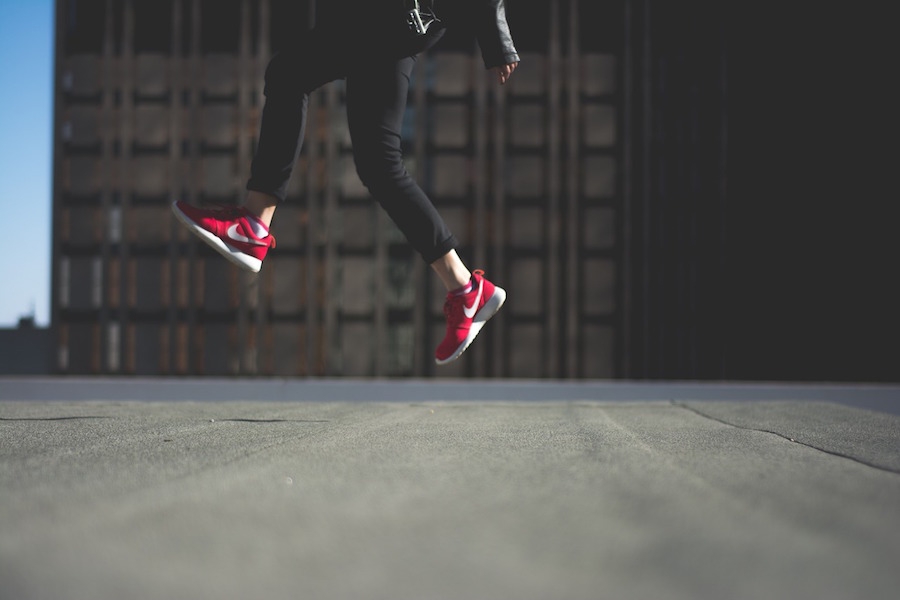With more cash in the bank, companies are upping stock purchases while investing in new equipment and wages.
As the economy and tax cuts put more money in their pockets, coprorate America is stepping up stock buybacks, a practice in which a company purchases its own shares. Two Oregon-based athletic apparel companies, Nike and Columbia, recently announced buybacks of $15 billion and $200 million respectively.
There are two schools of thought when it comes to buybacks. Some argue that companies flush with cash should invest in people and equipment instead of repurchasing shares. Others say buybacks make wise use of additional funds, raising a company’s long-term profitability and paving the way for future investment.
For Nike, “investing is always priority number one,” says Wedbush analyst Christopher Svezia. But the amount of the buyback has increased over the years, he says. Nike’s buyback rose from $12 billion in 2015 to $15 billion in June.
The Tax Cuts and Jobs Act that Republicans passed in January might have led some companies to boost buybacks, analysts say. The law slashed the corporate tax rate from 35% to 21%, saving companies around $600 billion. It also cut repatriation taxes, encouraging companies to bring back profits from abroad. That’s a boon for the domestic cash reserves of Nike, Columbia and other sportswear giants that hold numerous foreign subsidiaries.
“Across my industry in general it’s either accelerated or initiated buybacks,” says Svezia, who also covers Columbia, Foot Locker and other sportswear players.
Several other public companies in Oregon noted share repurchases in their SEC filings in the past couple of years. In February 2016, Lithia Motors’ board of directors authorized a $250 million share repurchase program. In the last quarter of 2018 the company bought back $33.9 million in shares. As part of a $250 million program announced in 2013, Greenbrier has repurchased $137 million in shares.
Share repurchase programs in effect at major Oregon Companies
Nike: $12 billion
Lithia Motors: $250 million
Greenbrier: $250 million
But even before the tax law took effect, companies spent a large portion of net profits on buybacks as the economic expansion took off. An analysis released in July by the liberal think tank the Roosevelt Institute found that companies spent around 60% of their profits on buybacks between 2015 and 2017. Federal Reserve data show that buybacks account for 4% of annual economic output, up from 0% in the 1990s.
Citing a wave of repurchase announcements nationwide, a recent Atlantic article declared that buybacks are “eating the world,” devouring cash that could be spent on capital investment and wage growth.
Other analysts take less of a zero-sum attitude toward buybacks, arguing that profitable companies like Nike can invest in people and capital while repurchasing shares.
“If you have extra cash I’d rather see buybacks,” Yarbrough says. “They could make acquisitions, but when you get to Nike size, there’s really nothing out there big enough to buy.”
Citing Columbia as an example, Svezia says, “Yes, they raised the dividend and enhanced their buyback. But they’ve also done other things,” including investing around $40 million in product development and marketing to grow the brand.
The same goes for Nike. The company has grown so large and profitable, Edward Jones analyst Brian Yarbrough says, that it’s hard to find smart investments and acquisitions it hasn’t made already. Nike held $4.2 billion in cash and equivalents in 2018, according to its SEC filings, up from $3.8 billion in 2017.
“If you have extra cash I’d rather see buybacks,” Yarbrough says. “They could make acquisitions, but when you get to Nike size, there’s really nothing out there big enough to buy.”
“As long as things keep humming along,” Yarbrough says. “You can expect $3 to $4 billion a year.”
The bigger problem, Yarbrough says, is when companies finance buybacks by taking on debt. That’s rampant in the restaurant industry, according to the Roosevelt Institute report, where companies spent an average of 136% of net profits between 2015 and 2017 to buy back shares.
However it affects workers and the economy, buybacks carry gains for investors. With fewer shares on the market, key financial indicators, like earnings per share, go up. That bolsters investor confidence. It also counters the dilution in stock price that can occur when a company issues new shares.
It also can lead to a modest increase in share price, though Svezia says that effect is minimal compared to a company’s performance.
With a booming economy and tax averse political climate, cash reserves—and buybacks—are likely to increase. Nike’s newly announced buyback program takes effect in 2019, and barring unforeseen consequences will continue to scale up incrementally.
“If you would see a downturn in the economy, they may slow the buyback down,” Yarbrough says of Nike. “But as long as things keep humming along you can expect $3 to $4 billion a year.”
To subscribe to Oregon Business, click here.




